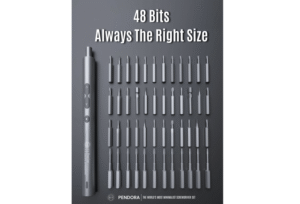Graphene is a relatively new material that has began to gain popularity in the early 2000s. This article aims to compile relevant information related to the use of graphene in consumer products to aid us in the review of product specifications and design.
It is the “lightest, strongest, and thinnest material that is known, and it is touted as the best heat conductor and electricity conductor ever discovered
Graphene is the subject of relentless research and is thought to be able to revolutionize entire industries, as researchers hypothesize many potential kinds of graphene-based materials and applications.
What is the difference between graphite and graphene?
Physically, graphene is just a 2-dimensional, single layer of graphite that is only one atom thick, arranged in a honeycomb lattice structure. Even though it is ultra-thin, graphene offers properties that far exceed the parent graphite material.
Graphite is a 3-dimensional, crystalline form of carbon with atoms arranged in a hexagonal structure.
So to explain in layman’s terms, graphene is like slicing off an ultra-thin layer of graphite no more than one atom thick, which in reality it is not produced by “slicing”.
Compare Properties of Graphene
The graphene material is just one atom thin and super lightweight, making it useful as a coating material. We have compiled the following properties for ease of reference when we evaluate products with different materials. As such, other commonly used materials are also included for comparison purpose.
- Mechanical – The following are based on Tensile Strength
- Graphene: 130,000 MPA (Engineering 50,000 – 60,000)
- Carbon Nanotube: 11,000 – 63,000 MPA
- Carbon fiber (Toray T1100G): 7000 MPA (fibers alone, strongest human fiber)
- Silicon (m-Si): 7000 MPA
- Carbon fiber: 4,137 MPA (fibres alone) (Often used in high-end bicycles in laminated sheet)
- Aramid (Kevlar or Twaron): 3757 MPA (Used in bulletproof vest)
- Boron: 3,100 MPA
- Diamond: 2,800 MPA
- Tungsten: 1,510 MPA
- Chromium-Vanadium Steel (AISI 6150): 940 MPA (used in knives)
- Stainless Steel (AISI 302): 860 MPA
- Mild Steel (1090): 841 MPA
- Brass: 500 MPA
- Aluminium: 483 MPA
- Structural Steel (A36): 400–550 MPA
- Bamboo: 350-500 MPA
- Thermal Conductivity List
- Graphene: 4000 to 5000+ W/mK
- Diamond: 2000 – 2200 W/mK
- Silver: 429 W/mK
- Copper: 398 W/mK (Cheapest?)
- Gold: 315 W/mK
- Aluminium nitride: 310 W/mK
- Silicon carbide: 270 W/mK
- Aluminium: 247 W/mK
- Tungsten: 173 W/mK
- Graphite: 168 W/mK (Parent material of Graphene)
- Zinc: 116 W/mK
- Carbon Steel: 45 – 5 0W/mK (Useful for Cooking Wok)
- Stainless Steel: 15 – 17 W/mK
Source: extracted from List of thermal conductivities
Electrical Conductivity List
Graphene: 8 – 10 x 107 s/m (source: mdpi.com)
Silver: 6.3 x 107 s/m
Copper: 59.6 x 107 s/m
Gold: 41.1 x 107 s/m
Aluminium: 37.7 x 107 s/m
Calcium: 29.8 x 107 s/m
Tungsten: 17.9 x 107 s/m
Zinc: 16.9 x 107 s/m
Cobalt: 1.60 x 107 s/m
Nickel: 1.43 x 107 s/m
Tin: 9.17 x 106 s/m
Source: Electrical conductivity





